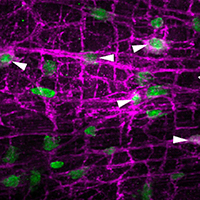Effect of TNBS-induced colitis on enteric neuronal subpopulations in adult zebrafish

Submitted: 15 July 2020
Accepted: 24 August 2020
Published: 28 August 2020
Accepted: 24 August 2020
Abstract Views: 1107
PDF: 805
HTML: 7
HTML: 7
Publisher's note
All claims expressed in this article are solely those of the authors and do not necessarily represent those of their affiliated organizations, or those of the publisher, the editors and the reviewers. Any product that may be evaluated in this article or claim that may be made by its manufacturer is not guaranteed or endorsed by the publisher.
All claims expressed in this article are solely those of the authors and do not necessarily represent those of their affiliated organizations, or those of the publisher, the editors and the reviewers. Any product that may be evaluated in this article or claim that may be made by its manufacturer is not guaranteed or endorsed by the publisher.

 https://doi.org/10.4081/ejh.2020.3161
https://doi.org/10.4081/ejh.2020.3161






